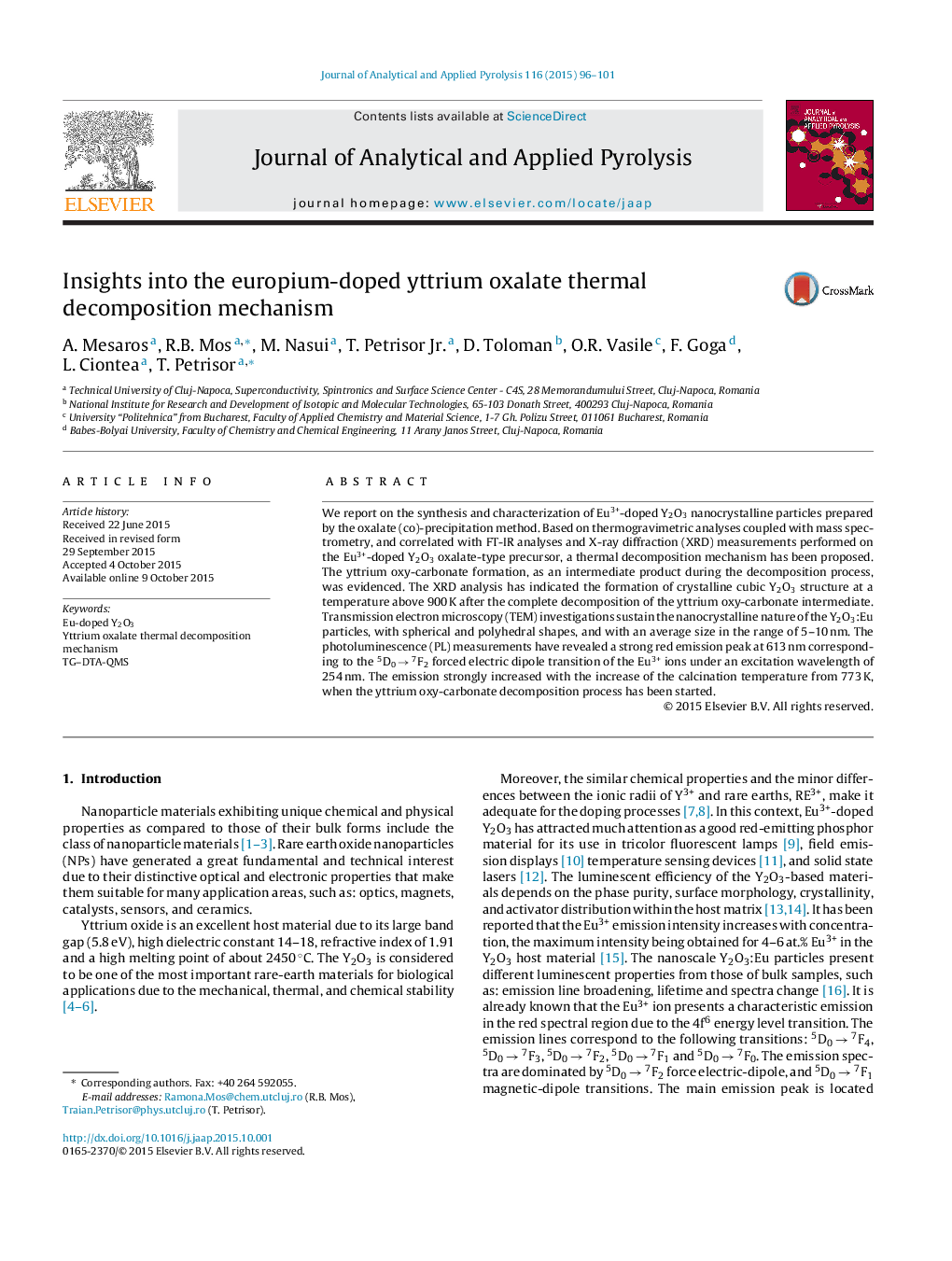| Article ID | Journal | Published Year | Pages | File Type |
|---|---|---|---|---|
| 1197006 | Journal of Analytical and Applied Pyrolysis | 2015 | 6 Pages |
•The thermal decomposition mechanism of Y/Eu oxalate precursor has been proposed.•The formation of the (Y,Eu)2O2CO3 intermediary phase during the decomposition.•The structural, morphological and luminescence characterizations have been achieved.
We report on the synthesis and characterization of Eu3+-doped Y2O3 nanocrystalline particles prepared by the oxalate (co)-precipitation method. Based on thermogravimetric analyses coupled with mass spectrometry, and correlated with FT-IR analyses and X-ray diffraction (XRD) measurements performed on the Eu3+-doped Y2O3 oxalate-type precursor, a thermal decomposition mechanism has been proposed. The yttrium oxy-carbonate formation, as an intermediate product during the decomposition process, was evidenced. The XRD analysis has indicated the formation of crystalline cubic Y2O3 structure at a temperature above 900 K after the complete decomposition of the yttrium oxy-carbonate intermediate. Transmission electron microscopy (TEM) investigations sustain the nanocrystalline nature of the Y2O3:Eu particles, with spherical and polyhedral shapes, and with an average size in the range of 5–10 nm. The photoluminescence (PL) measurements have revealed a strong red emission peak at 613 nm corresponding to the 5D0 → 7F2 forced electric dipole transition of the Eu3+ ions under an excitation wavelength of 254 nm. The emission strongly increased with the increase of the calcination temperature from 773 K, when the yttrium oxy-carbonate decomposition process has been started.
